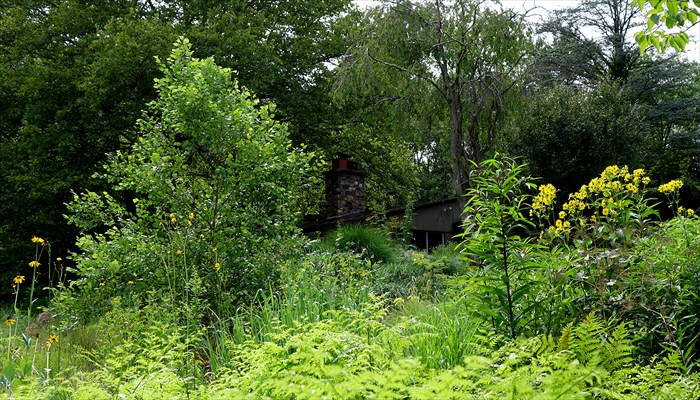Atmosphere in the garden - thoughts on a bright summer day
We recently visited a show of John Singer Sargent's water colors at the Brooklyn Museum. The predominant impression I brought away from that large exhibition was of the significance of light and shade in creating an atmosphere with the emotional power to move a viewer.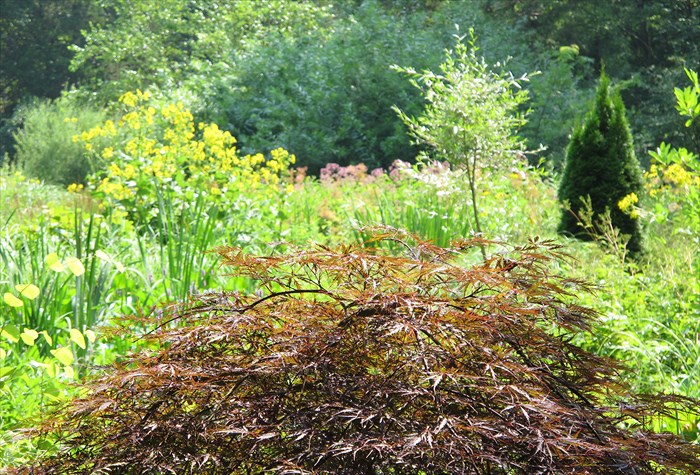 Seeing the Sargent watercolors was a reminder of the light.
Seeing the Sargent watercolors was a reminder of the light.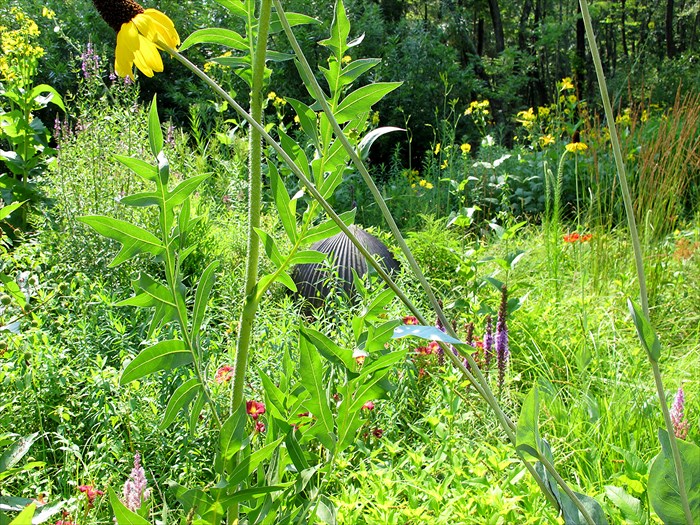 I've been loving the light in the garden this summer like no summer before.
I've been loving the light in the garden this summer like no summer before. I think a change that has brought much more light into the garden, and made the contrast of light and shade a new constant--I'm referring to the fall of many large White Pines on the south side of the garden in last year's Hurricane Sandy--has made me see the garden in a new way.
I think a change that has brought much more light into the garden, and made the contrast of light and shade a new constant--I'm referring to the fall of many large White Pines on the south side of the garden in last year's Hurricane Sandy--has made me see the garden in a new way. Now I'm welcoming the bright sunlight and the shade that makes it bright, and the constantly changing broken light.
Now I'm welcoming the bright sunlight and the shade that makes it bright, and the constantly changing broken light. I've been taking photos to try to capture the bright light--though I well know you can't make good photos in bright sunlight--and the interplay of light and shade. The brightness is difficult to capture but even flawed efforts show how important a role light and shade have in creating the atmosphere of the garden.
I've been taking photos to try to capture the bright light--though I well know you can't make good photos in bright sunlight--and the interplay of light and shade. The brightness is difficult to capture but even flawed efforts show how important a role light and shade have in creating the atmosphere of the garden. But atmosphere is more than the interplay of light and shade. It has roots in memory, certainly, and in other sources as well.
But atmosphere is more than the interplay of light and shade. It has roots in memory, certainly, and in other sources as well.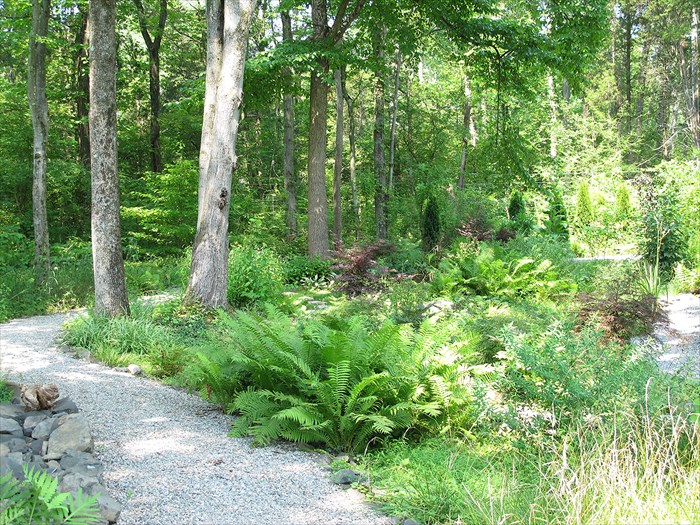 I'm recollecting long-ago visits to the Boboli Gardens in Florence, which were the subject of several of those Sargent watercolors at the Brooklyn Museum, and which awakened my own memories of several visits, over several decades, on blazingly hot summer days--when the broken light offered respite and, in retrospect, made wandering alone in the Boboli Gardens a familiar feeling.
I'm recollecting long-ago visits to the Boboli Gardens in Florence, which were the subject of several of those Sargent watercolors at the Brooklyn Museum, and which awakened my own memories of several visits, over several decades, on blazingly hot summer days--when the broken light offered respite and, in retrospect, made wandering alone in the Boboli Gardens a familiar feeling.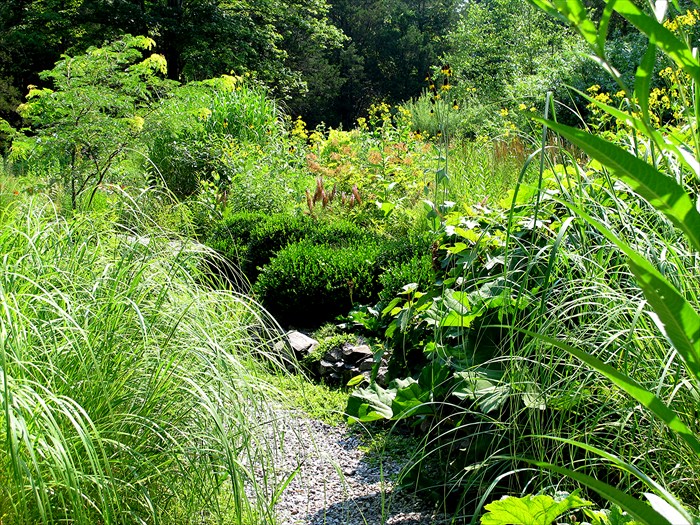 After my first visit, when I explored the gardens in a heightened state of surprise and exhilaration, return visits were different. I felt a sense of familiarity and recognition, and remembrance. Now some of the same feelings come to me in my own garden, though I know they are memories of another garden, really many other gardens, from the past.So I sometimes view my garden through this glass of memory. This is the power of nostalgia. It's come with a special intensity this summer ...
After my first visit, when I explored the gardens in a heightened state of surprise and exhilaration, return visits were different. I felt a sense of familiarity and recognition, and remembrance. Now some of the same feelings come to me in my own garden, though I know they are memories of another garden, really many other gardens, from the past.So I sometimes view my garden through this glass of memory. This is the power of nostalgia. It's come with a special intensity this summer ...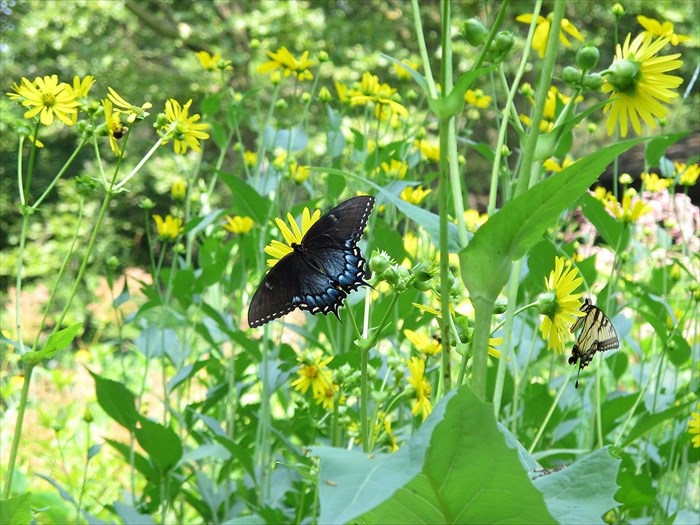 ... a sense of joyfulness, a kind of translucent singing in the air.
... a sense of joyfulness, a kind of translucent singing in the air. My garden is very unlike the Boboli Gardens, yet these sunny days awaken emotions associated with those memories. So I have to ask the question. Is there a deeper or more general similarity? If so, what is it? Is it atmosphere, and if so, what atmosphere? What is atmosphere?
My garden is very unlike the Boboli Gardens, yet these sunny days awaken emotions associated with those memories. So I have to ask the question. Is there a deeper or more general similarity? If so, what is it? Is it atmosphere, and if so, what atmosphere? What is atmosphere?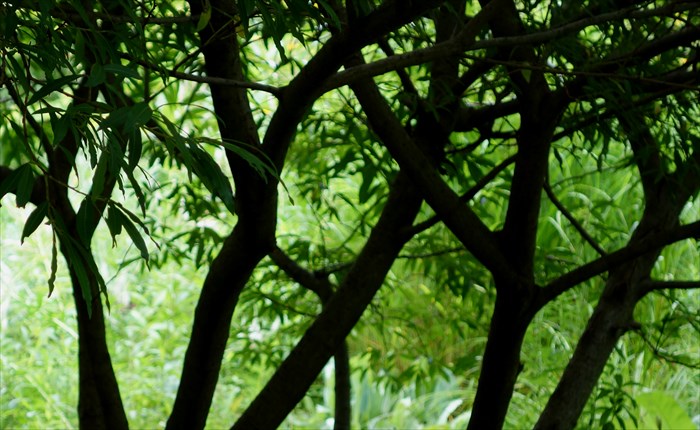 I can't say the similarity is anything more than the presence of paths to wander through broken sunlight, into the bright sun, into the shade. And paths that hide, then reveal. The ability to wander, to lose oneself, to be surprised. All in all a rather universal phenomenon at this time of summer in most of the world, not unique to the Boboli Gardens, but nonetheless a similarity made more powerful by my past visits there.
I can't say the similarity is anything more than the presence of paths to wander through broken sunlight, into the bright sun, into the shade. And paths that hide, then reveal. The ability to wander, to lose oneself, to be surprised. All in all a rather universal phenomenon at this time of summer in most of the world, not unique to the Boboli Gardens, but nonetheless a similarity made more powerful by my past visits there.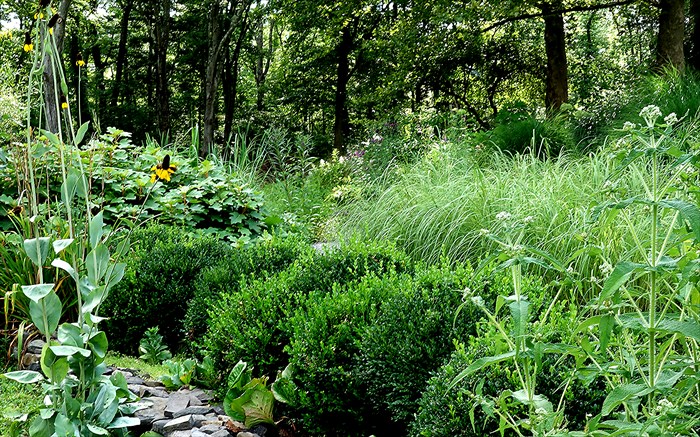 Another similarity with that garden from the past, though at a much different scale, is the hiding and revealing of the landscape. The dark woods in the image above and the shadowy areas in the one below add a richness to the experience of the garden--an uncertainty that makes the visitor want to see what is hidden, to explore further.
Another similarity with that garden from the past, though at a much different scale, is the hiding and revealing of the landscape. The dark woods in the image above and the shadowy areas in the one below add a richness to the experience of the garden--an uncertainty that makes the visitor want to see what is hidden, to explore further.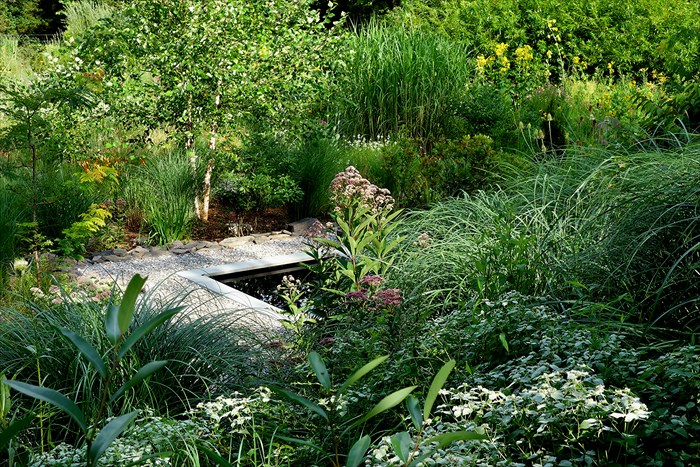 The uncertainty, the not-knowing is answered in an emotional, almost a musical sense by coming upon such images of concrete certainty as this--the bright, celebratory orange day lilies and the silver of the Mountain Mint ...
The uncertainty, the not-knowing is answered in an emotional, almost a musical sense by coming upon such images of concrete certainty as this--the bright, celebratory orange day lilies and the silver of the Mountain Mint ...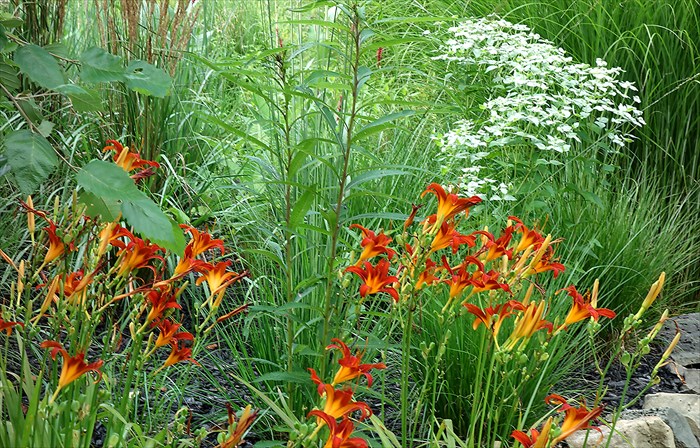 ... the lyrical image of butterflies feeding on Joe Pye Weed ...
... the lyrical image of butterflies feeding on Joe Pye Weed ...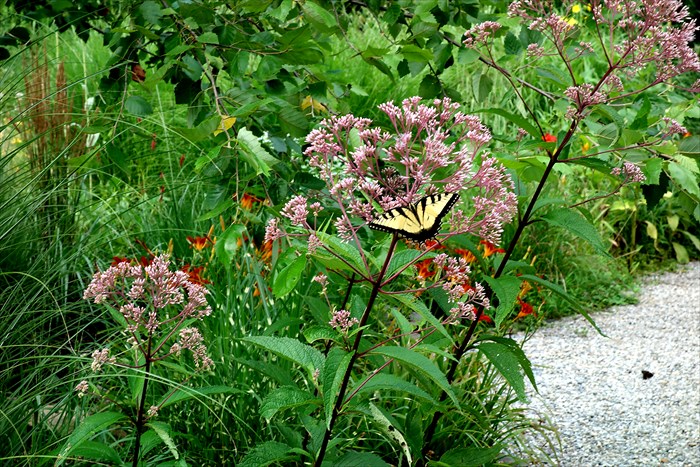 ... the tall outline of Silphium laciniatum straining to reach the sky ...
... the tall outline of Silphium laciniatum straining to reach the sky ...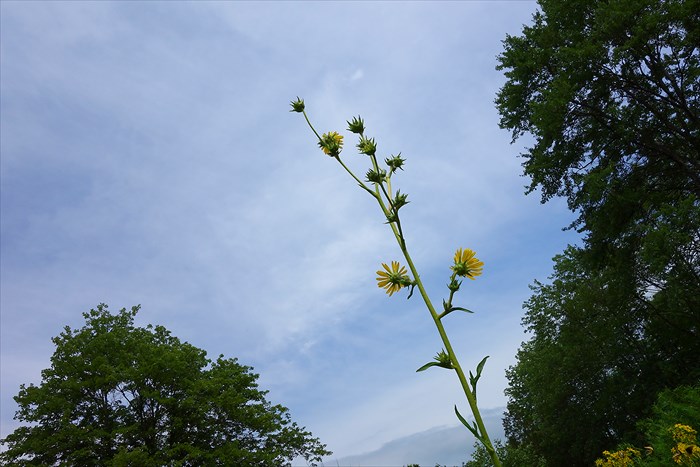 ... a variety of different sense impressions--light, dark, rising and falling song of cicadas, the gentle breeze stirring the treetops, brushing against your neck, fragrance, the occasional buzz of an airplane passing overhead.
... a variety of different sense impressions--light, dark, rising and falling song of cicadas, the gentle breeze stirring the treetops, brushing against your neck, fragrance, the occasional buzz of an airplane passing overhead. I suppose a garden's atmosphere depends on density of information--of sense impressions, cultural references, history, physical environment, light, sound, smell, memory, style ... almost anything a human being can experience in a garden. Somewhere in this cloud of impressions, memories, facts, prejudices and likes lies a common ground of shared experience, that is similar yet different for every person, so a garden's atmosphere may be similar or different to varying degrees for different individuals. And it will change with the seasons; mine certainly does; and day by day.But there must be some commonality of experience, some shared matrix of thought and feeling, to evoke the density of impression we call atmosphere. Something of a garden's atmosphere must be communal in nature.
I suppose a garden's atmosphere depends on density of information--of sense impressions, cultural references, history, physical environment, light, sound, smell, memory, style ... almost anything a human being can experience in a garden. Somewhere in this cloud of impressions, memories, facts, prejudices and likes lies a common ground of shared experience, that is similar yet different for every person, so a garden's atmosphere may be similar or different to varying degrees for different individuals. And it will change with the seasons; mine certainly does; and day by day.But there must be some commonality of experience, some shared matrix of thought and feeling, to evoke the density of impression we call atmosphere. Something of a garden's atmosphere must be communal in nature.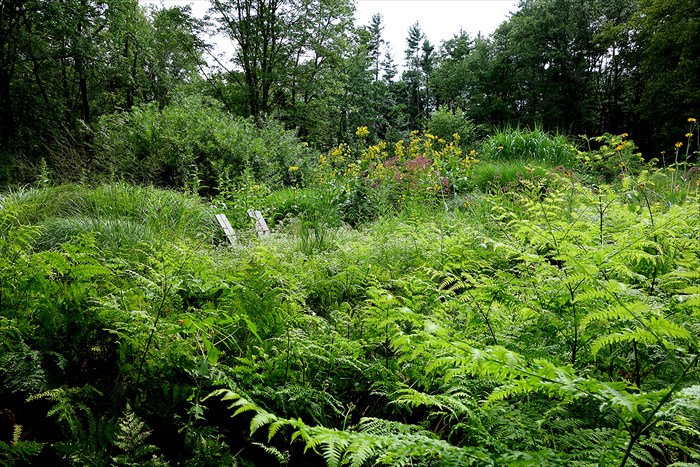 Some arrangements of plants, paths, and light can be said to evoke memories most garden visitors will share. The shady foreground and vertical light in the scene below might suggest a sense of joy upon emerging from darkness, or its opposite, a sense of protection offered by refuge from the dangers of exposure to the light. Both may add to the layers of impressions we call atmosphere.
Some arrangements of plants, paths, and light can be said to evoke memories most garden visitors will share. The shady foreground and vertical light in the scene below might suggest a sense of joy upon emerging from darkness, or its opposite, a sense of protection offered by refuge from the dangers of exposure to the light. Both may add to the layers of impressions we call atmosphere.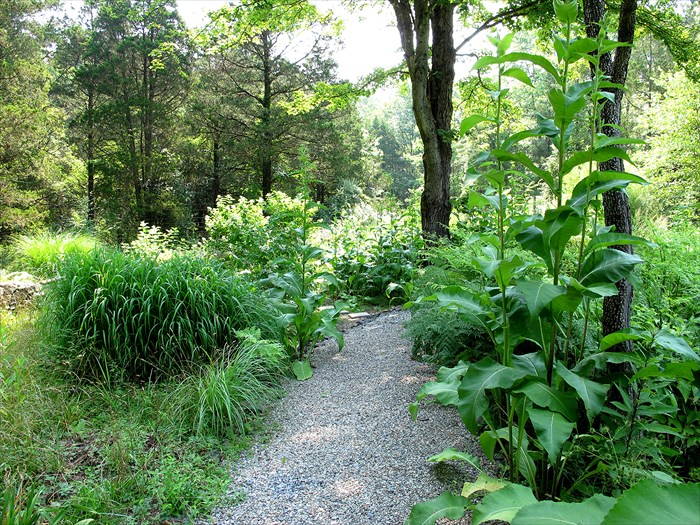 Is it possible to characterize the atmosphere of a garden, to give it a name?This is a naturalistic, woodland garden. It suggests a looseness, a relaxed feeling very different from a more formal garden. It's in a clearing in the woods, so the woods are a constant presence, and we all know woods are loaded with many different associations for humans, both pleasant and unpleasant. Counteracting, or perhaps more accurately balancing, any sense of unease introduced by the wooded setting is the bright circle of sky opening above. An irregular yet clearly demarcated circle of light defined by the woodland treetops. It is the source of all light, and all life, in the garden. One might compare the surrounding walls of trees and sky overhead to a temple, a spiritual place (shades of William Cullen Bryant's "The groves were God's first temples."). This is also a metaphor common to American forest clearings.The garden has almost no straight lines but many curves, and barriers of high plants that block the view. It suggests movement and instability, not order and stillness (though it does have a stillness of its own nature). The clearing itself suggests some measure of protection in the midst of the dense woods (you can see danger coming, just as homesteaders on the old frontier cleared around their living space to see danger at a distance), more a feature of North American gardens than of those in Europe.
Is it possible to characterize the atmosphere of a garden, to give it a name?This is a naturalistic, woodland garden. It suggests a looseness, a relaxed feeling very different from a more formal garden. It's in a clearing in the woods, so the woods are a constant presence, and we all know woods are loaded with many different associations for humans, both pleasant and unpleasant. Counteracting, or perhaps more accurately balancing, any sense of unease introduced by the wooded setting is the bright circle of sky opening above. An irregular yet clearly demarcated circle of light defined by the woodland treetops. It is the source of all light, and all life, in the garden. One might compare the surrounding walls of trees and sky overhead to a temple, a spiritual place (shades of William Cullen Bryant's "The groves were God's first temples."). This is also a metaphor common to American forest clearings.The garden has almost no straight lines but many curves, and barriers of high plants that block the view. It suggests movement and instability, not order and stillness (though it does have a stillness of its own nature). The clearing itself suggests some measure of protection in the midst of the dense woods (you can see danger coming, just as homesteaders on the old frontier cleared around their living space to see danger at a distance), more a feature of North American gardens than of those in Europe. But this is only the large-scale setting. At the level of detail, you can see so-called cultivated plants mixed with natives and, if you will, weeds.Though the main impression in my garden is of green, you'll see many silver and white leaves and flowers, as well as highly reflective foliage that registers as silver at certain times of day. These certainly play a role in the garden's atmosphere, catching the light in different ways at various times of day, capturing and diverting attention, shaping experience in unforeseeable ways.
But this is only the large-scale setting. At the level of detail, you can see so-called cultivated plants mixed with natives and, if you will, weeds.Though the main impression in my garden is of green, you'll see many silver and white leaves and flowers, as well as highly reflective foliage that registers as silver at certain times of day. These certainly play a role in the garden's atmosphere, catching the light in different ways at various times of day, capturing and diverting attention, shaping experience in unforeseeable ways.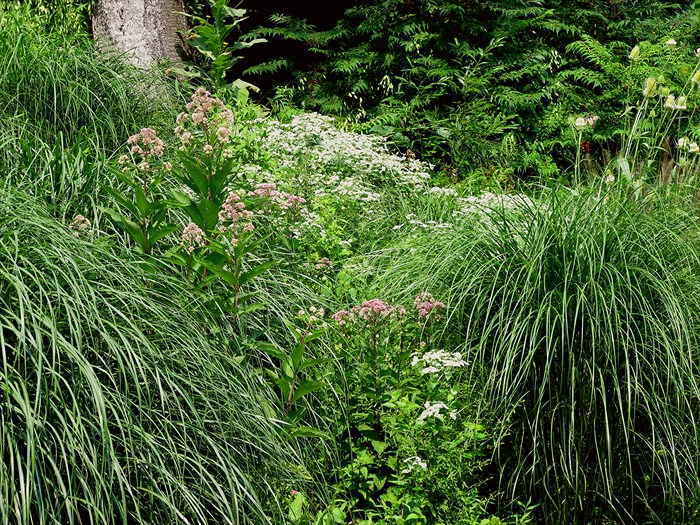 Sitting out in the morning, I'm very much aware that I'm sitting in the middle of the woods, in a relatively small clearing that gives me both a sense of exposure and protection. In his book What are Gardens For? Rory Stuart mentions how sounds of roadway traffic or airplanes can spoil the atmosphere of a garden. That isn't necessarily so. My garden in the woods is distant from, but nevertheless in the flight paths of major airports in New York City, Philadelphia and Newark, New Jersey. So in the quietness of the garden, I hear the distant swoosh of airliners thousands of feet overhead. As I sit in the quiet of the morning garden, I recall how protected I feel from the world "out there," I know my garden as a refuge. I'm also reminded of the sounds of the aircraft of war, and how gardens can be temporary refuges during times of war. I remember stories of gardens in dangerous times, how they can offer temporary protection, how they can offer the illusion that all is well when it isn't. And I'm reminded of the Biblical quotation from Micah, "But they shall sit every man under his vine and under his fig tree; and none shall make them afraid."
Sitting out in the morning, I'm very much aware that I'm sitting in the middle of the woods, in a relatively small clearing that gives me both a sense of exposure and protection. In his book What are Gardens For? Rory Stuart mentions how sounds of roadway traffic or airplanes can spoil the atmosphere of a garden. That isn't necessarily so. My garden in the woods is distant from, but nevertheless in the flight paths of major airports in New York City, Philadelphia and Newark, New Jersey. So in the quietness of the garden, I hear the distant swoosh of airliners thousands of feet overhead. As I sit in the quiet of the morning garden, I recall how protected I feel from the world "out there," I know my garden as a refuge. I'm also reminded of the sounds of the aircraft of war, and how gardens can be temporary refuges during times of war. I remember stories of gardens in dangerous times, how they can offer temporary protection, how they can offer the illusion that all is well when it isn't. And I'm reminded of the Biblical quotation from Micah, "But they shall sit every man under his vine and under his fig tree; and none shall make them afraid." And, of course, I often think about life and death, about those whose lives have ended, about peoples who have passed away, cultures and languages gone. Of the people who lived on this land before the coming of the European usurpers. The early American farmers who planted orchards of fruit on these hills now covered by woods. Thus the urge to continue life in the face of death, to create, to change, to make something beautiful. To plant silvery leaved Pulmonarias for the passing delight they bring ... a light in the darkness ...
And, of course, I often think about life and death, about those whose lives have ended, about peoples who have passed away, cultures and languages gone. Of the people who lived on this land before the coming of the European usurpers. The early American farmers who planted orchards of fruit on these hills now covered by woods. Thus the urge to continue life in the face of death, to create, to change, to make something beautiful. To plant silvery leaved Pulmonarias for the passing delight they bring ... a light in the darkness ...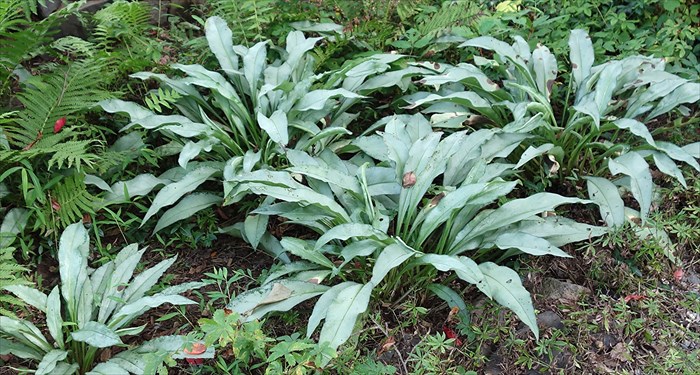 ... to make paths that appear to curve into the unknown ...
... to make paths that appear to curve into the unknown ...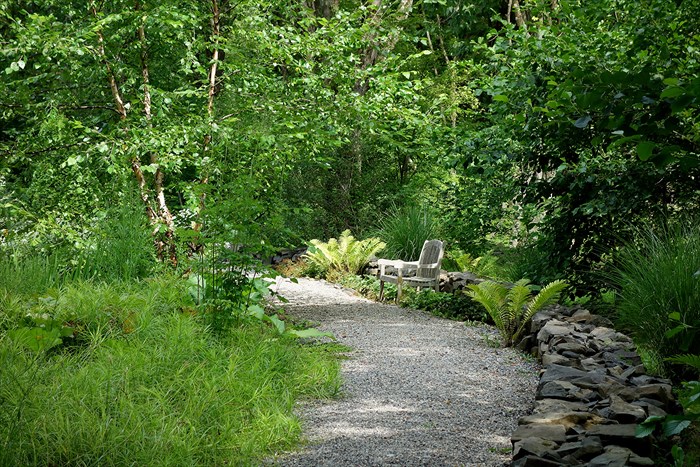 ... to delight in contrasting shapes and textures, to merge with the small and particular ...
... to delight in contrasting shapes and textures, to merge with the small and particular ...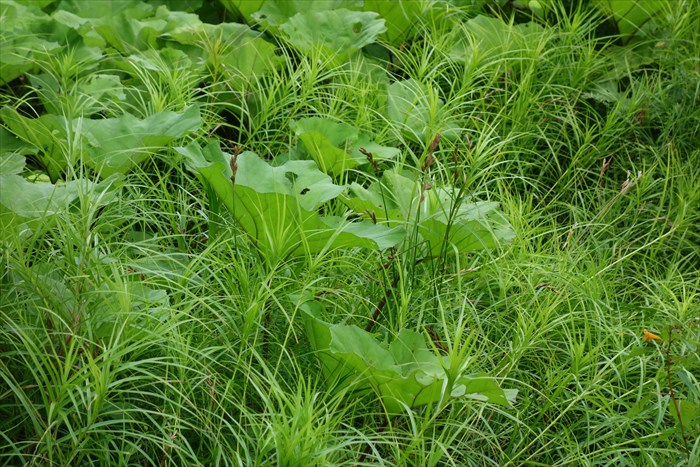 ... to make plantings that change from day to day, week to week, to celebrate the changes of the seasons, the cycles of life ... to escape into technique ... layering Joe Pye Weed and Salix 'Britzensis' ...
... to make plantings that change from day to day, week to week, to celebrate the changes of the seasons, the cycles of life ... to escape into technique ... layering Joe Pye Weed and Salix 'Britzensis' ...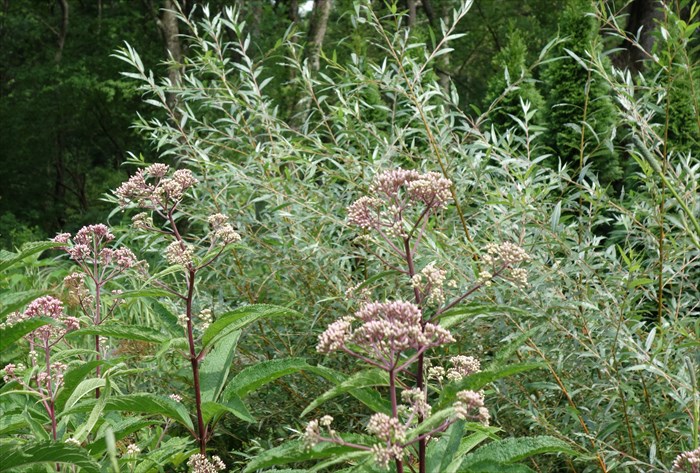 ... and to make that layering more complex, suggesting things that grow in conditions alien to us ...
... and to make that layering more complex, suggesting things that grow in conditions alien to us ... ... the birth and life of frogs, such an important part of this garden ...
... the birth and life of frogs, such an important part of this garden ... ... and the dark, cool places where more hidden life goes on ...
... and the dark, cool places where more hidden life goes on ... ... the silver feast that Mountain mint (Pycnantheum muticum) makes for bees and wasps and butterflies ...
... the silver feast that Mountain mint (Pycnantheum muticum) makes for bees and wasps and butterflies ... ... and the chiaroscuro of bright surfaces and dark interiors ...
... and the chiaroscuro of bright surfaces and dark interiors ...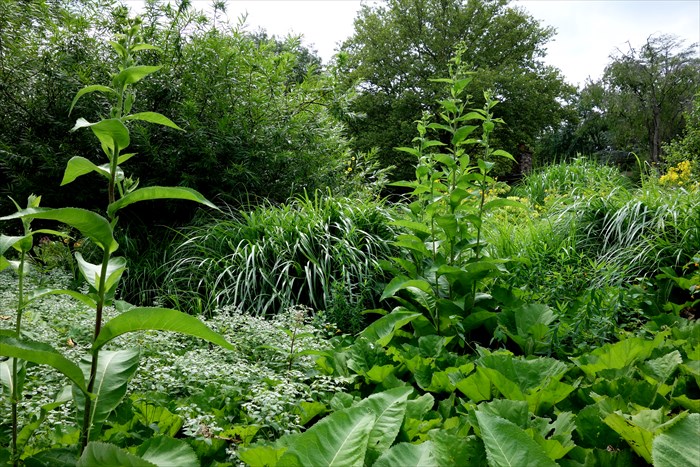 ... the bright pathway into darkness ...
... the bright pathway into darkness ...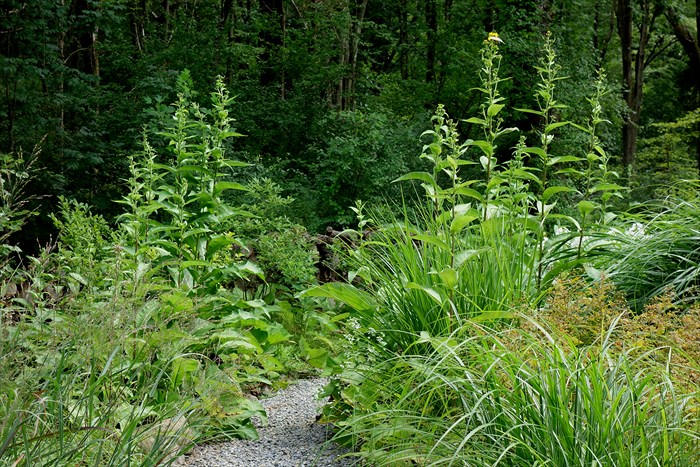 No. I can't name the atmosphere in this garden. It changes at every step, yet seems to remain the same.
No. I can't name the atmosphere in this garden. It changes at every step, yet seems to remain the same.